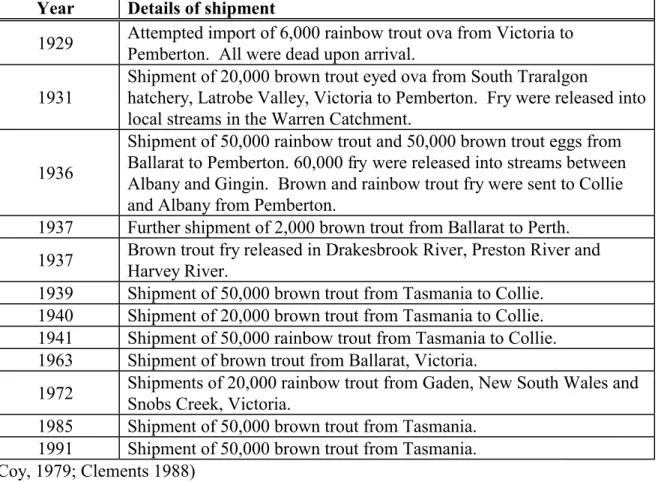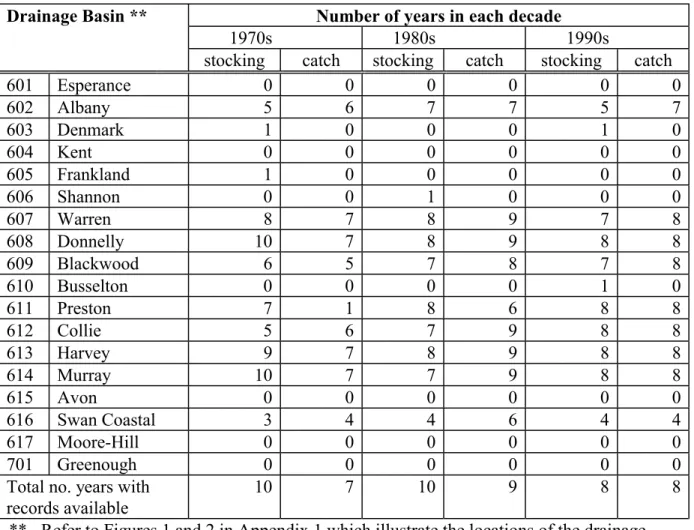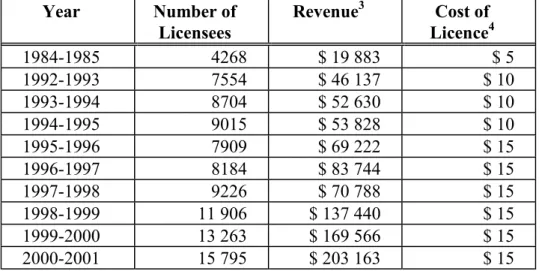MIGRATION OF BROWN TROUT (Salmo trutta) AND RAINBOW (Oncorhynchus mykiss) IN AND IN. This discussion paper has been prepared to assist in the assessment of the potential impact of moving brown trout (Salmo trutta) and rainbow trout (Oncorhynchus mykiss) into and within Western Australia for the purposes of recreational stock augmentation in public waters, non-commercial aquaculture on private property and commercial aquaculture .
INTRODUCTION
Background and Objectives
The Translocation of a Species
THE BIOLOGY OF TROUT
- Taxonomy and Description
- Natural Distribution
- Spawning and Early Life History
- Age and Growth
- Diseases, Parasites and Predators
- Diseases and Parasites
- Disease Testing and Certification
- Predators
- Stock Variations
After the discovery of mycobacteriosis in trout by the Southwest Freshwater Research and Aquaculture Center in 1988, the Fish Health Section of the Department of Fisheries regularly tested trout fingerlings for the bacteria. In the years this testing was conducted, no other evidence of disease was found at the Southwest Freshwater Research and Aquaculture Center.
TRANSLOCATION OF SALMONIDS
Introduction of Salmonids to Australia
- History of Introduction
- Demand for Introduction
While many introductions were for practical reasons, such as the production of food by established methods on domesticated species, there was also a desire to 'Europeanise' the Australian landscape. Trout and Atlantic salmon are highly regarded freshwater fish species in the Western world, especially in connection with fly fishing.
Introduction of Trout to Western Australia
Reasons for the lack of success may have been lack of experience with trout culture and stocking practices, lack of trout identification and angling experience, poor spawning conditions for trout or a period of unfavorable climate. Imports of brown and rainbow trout from the eastern states ceased in 1991 and 1972 respectively, and the current stock available in WA is the offspring of earlier imports.
Translocation of Trout within Western Australia
- Stocking By Acclimatisation Societies
- Stocking by the Department of Fisheries
During 1948 the Trout Acclimatization Council of WA was formed to co-ordinate the trout distribution activities of the South West Freshwater Research and Societies and. Some of the trout farms have since developed several breeding stocks, and the Southwest Freshwater Research and Aquaculture Center has been looking more toward meeting the high demand for recreational fishery catchment waters.
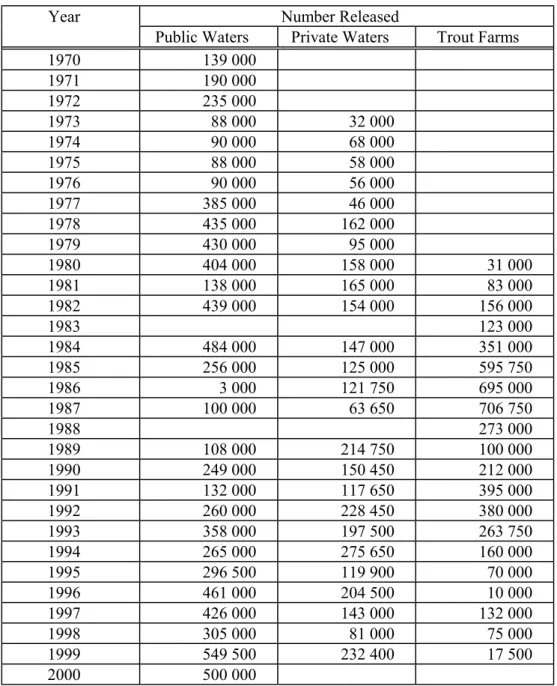
RECREATIONAL STOCK ENHANCEMENT
- Stocking Practices
- Stocking Technique
- Success of Trout Stocking
- Access to Stocked Waters
- Social and Economic Benefits
- Tourism Value
A comprehensive list of catchments in South West WA is attached in Appendix 1 detailing the stock history of trout in WA. Summer/autumn pools in the rivers of the Southwest have water temperatures that often exceed fly temperatures for trout (26 to 27oC) and often have poor water quality.
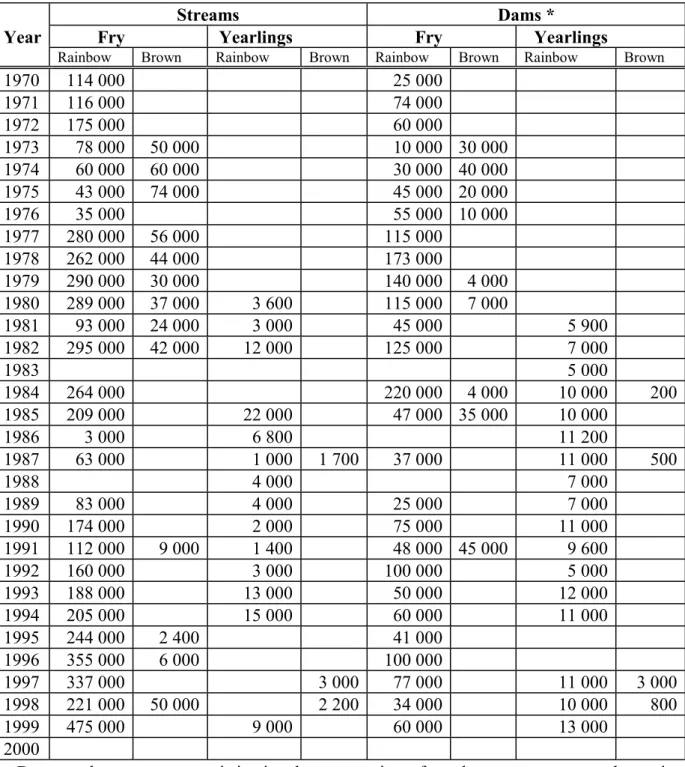
TROUT AQUACULTURE
- Synopsis of the Commercial Aquaculture Industry
- Aquaculture Production Systems
- Farm Dams
- Put-and-Take Ponds
- Earthen Pond Culture
- Intensive Raceway Culture
- Intensive Concrete Circular Pond Culture
- Trout Feeding and Grow-out
- Economic Benefits of Commercial Aquaculture
- Non-commercial Aquaculture
- Rainbow Trout in Inland Salt Water
The water inlet must be designed so that water flows into the runway along the entire width of the narrow basin. The pond floor should be graded steeply in the inlet area and then gently sloped (scale 1 in 50), downward towards the outlet. Spiral paths are also used where the water inlet is located at the top of a circular tank and the water spirals down to an outlet at the bottom of the tank.
They have a central drain hole and the bottom of the pond should slope (1 in 20) to this drain. The supply pipe spans the diameter of the pond and rests on the discharge screen. The water is then drained down the length of the tube through a series of jet holes slightly angled from the vertical.
Interest in inland saltwater trout production has increased over the past few years and has led to the formation of the Western Inland Fisheries Cooperative and the Saltwater Trout Alliance.
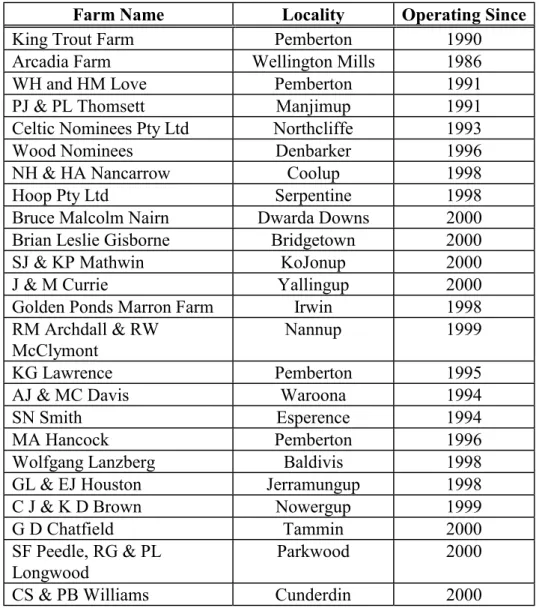
SOUTH-WESTERN AUSTRALIA ENVIRONMENTAL FEATURES
- Topography
- Climate and Water Resources
- Freshwater Environment of South-West Australia
- Introduced Species
- Success of Introductions
- Native Species
The aquatic habitats of southeastern Australia are characterized by predictable climatic conditions, strong seasonal litterfall and synchronized life histories of resident fauna (Bunn and Davies, 1990). South-western Australia supports only 63 per cent and 49 per cent of the invertebrate families and species (respectively) of those recorded in the south-east. The highly endemic nature of the Southwest's fauna and flora, a result of such long isolation, has led to the region being listed as one of the world's most important biological hotspots.
It is known that the lateritic5 soils of the South-West's catchments are extremely infertile and the allochthonous6 input of energy into the streams, in the form of forest debris, is poor in quality (Bunn, 1988; Bunn and Davies, 1990). The rivers in the South West are subject to degradation pressures associated with the colonization and expansion of the population in WA and this has had a devastating effect on many of the rivers (WAWRC 1992). The effects of the mostly deliberate introductions of Gambusia on the south-western Australian native fish fauna are only now being revealed, with the species showing aggressive territorial behavior towards, and possibly competition for food resources with, similar-sized native fish (such as Galaxias) occidentalis, Bostockia porosa and Edelia vittata) in slow-flowing and lentic9 water bodies (Hambleton et al, 1996; Gill et al, 1999).
The first category includes those species that show most of the above-mentioned characteristics and are represented by members of families.
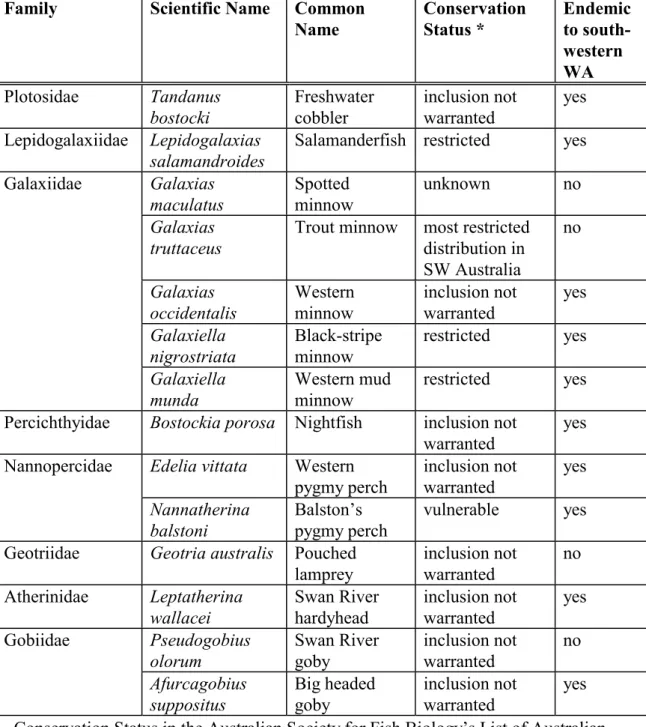
ENVIRONMENTAL ISSUES
- Impact on the Environment and Native Species
- Competition with and/or Predation on Native Fishes
- Competition with and/or predation on Native Invertebrates
- Genetic Diversity
- Introduction of Diseases and Parasites
- Conclusions
- Future Policy on the Translocation of Brown and Rainbow Trout
Research indicates that there has been a decline in the abundance of western mullet, western smallmouth bass and nightfish in a south-west stream where brown trout and rainbow trout also occur (see Pen et al, 1991a; Morgan and Gill, 1996; Morgan et al, 1998 ). However, in the Southwest, trout have coexisted with shrimp and other freshwater crustaceans and invertebrates for more than 50 years. Further research on the impact of trout on freshwater invertebrates in the Southwest is needed to critically assess the impact.
The impacts arise from the presence of trout in natural waterways, and continued restocking serves to maintain this presence in the absence of successful spawning. As an introduced species, there are no endemic populations of cutthroat trout in the south west of WA. However, many of the species of native fish that were originally present in the Swan Coastal Upland have disappeared.
Although an extreme example, changes in land and water management in the other southwestern catchments are also likely to have major consequences for the endemic aquatic fauna.
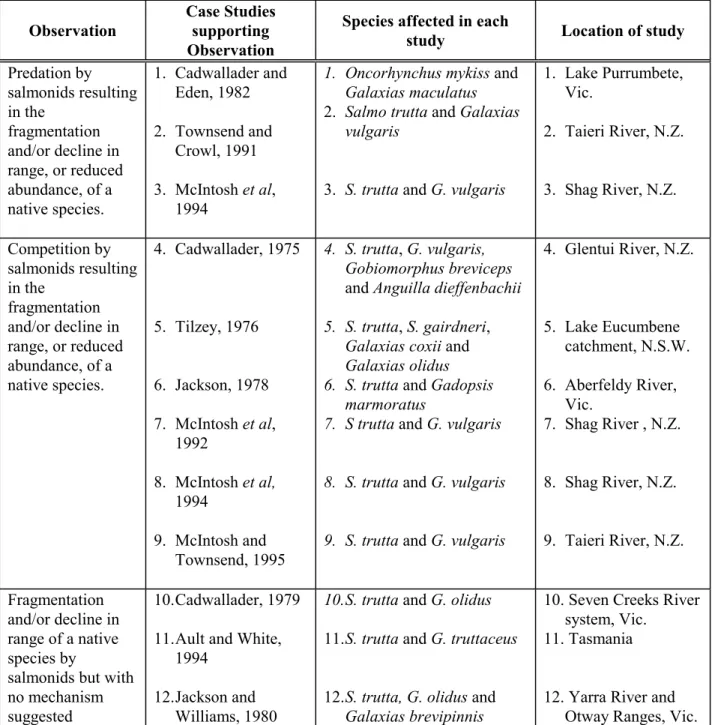
1988, "Effects of hydrological change and destocking on a stream population of Salmo trutta L.", Australian Journal of Marine and Freshwater Research, 39, p. 337-354. 1971, 'World distribution of rainbow trout (Salmo gairdneri)', Journal of the Fisheries Research Board of Canada. 1977, "The Status of Gambusia affinis (Baird and Girard) in South-Western Australia", Records of the Western Australian Museum, 6, p. 1984, Australian freshwater fishes: Biology and management, Griffin Press Ltd, Netley, South Australia.
Hancock, Australian Government publishing service, Canberra, p 1996, The effect of the Big Brook dam during drought on the fish communities of Lefroy and Big Brooks, Unpublished report to the Water and Rivers Commission of Western Australia. in press), 'Another aquarium fish (green swordtail Ziphophorus helleri, Weckel: Poeciliidae) established in the wild in Western Australia), Records of the WA Museum 20, pp.349-352. Proceedings of a Seminar and Workshop held on 26 and 27 September 1994, eds Prokop, F. 1985, A Guide for Trout Farming in Western Australia, Fisheries Interpretation Publication No. 2, Fisheries Department, Western Australia., p. 1989, 'A systemic protozoal disease in farmed salmonids', Journal of Fish Diseases, 12, p. 1944, 'Report on investigation of mortality of trout eggs at the Pemberton fish hatchery. 1990, 'Biology of the nightfish, Bostockia porosa, in a south-western Australian River', Australian Journal of Marine and Freshwater Research, 41, pp.
1995, 'Genetic and morphological differences between populations of the western minnow, Galaxias occidentalis, from two river systems in southwestern Australia', Australian Journal of Marine and Freshwater Research.
APPENDIX ONE
There are many large farm ponds (channel type) suitable for trout stocking, especially on the upper reaches of the Hay and Denmark Rivers and in the valley of Scottsdale Brook. There are many coastal dune lakes in the South Coast National Park (Deadmans Lake) that were filled in the 1950s. Some excellent spawning gravel substrate exists in the lower tributaries (such as Carey and Fly Brooks) and the upper river is stocked with rainbow trout in the tributaries near Manjimup.
Recognition of the excellent rainbow trout fishery which arose in the productive main stream down to Nannup and to the estuary was slow, but publicity from the annual Nannup fishery. The deliberate introduction of redfin perch to Waroona Dam in the early 1980s caused the precipitous decline in the trout fishery. The many very low salinity tributaries in the forest are mostly perennial and the summer flows have maintained the health of the lower river.
The Murray Trout fishery has been known for the rapid growth of fish in the productive main river and the retention of large, very well prepared fish. Trout stocking also took place privately in large fish farm dams on side streams in the Laboda scarp gorge. The Department of Fisheries first stocked the lake with fingerlings in the 1970s at the request of the lake superintendent.
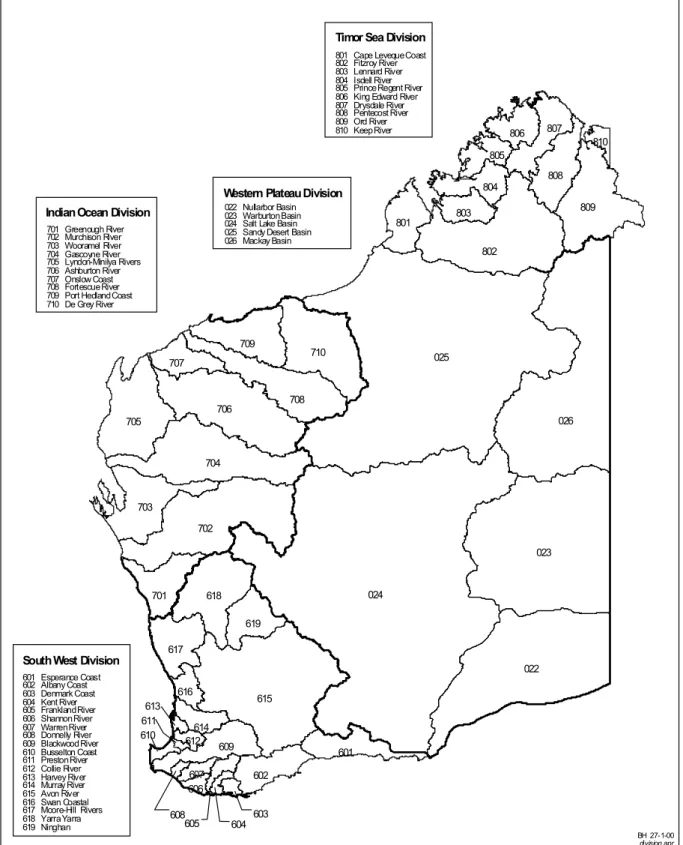
APPENDIX TWO
Helena River and Beracking Brook, above Mundaring Weir - High Conservation Value 617 Moore-Hill Rivers • Gingin Brook - Fish are limited and high quality.
APPENDIX THREE
APPENDIX FOUR
FISHERIES MANAGEMENT PAPERS
4 volumes) Evaluation of management options Volume 1. 68 Long-term management strategies for the Western Lobster Fishery. A Market-Based Economic Assessment for the Western Rock Lobster Industry, Part 3. 70 Long-Term Management Strategies for the Western Lobster Fishery. 71 The Rock Lobster Industry Advisory Committee Chairman's Report, October 1994, The Western Lobster Fishery - Management Proposals for the 1994/95 and 1995/96 Seasons (November 1994).
82 The impact of the new management package on smaller operators in the Western Rock lobster fishery R. 86 A summary of ministerial policy guidelines for lobster processing in Western Australia by the Working Group appointed by the Minister for Fisheries and chaired by Peter Rich (December 1995). 123 Future Directions for the Rock Lobster Industry Advisory Committee and the Managed Western Lobster Fishery.
A discussion paper prepared by Kevin Donohue on behalf of the Rock Lobster Industry Advisory Committee.
